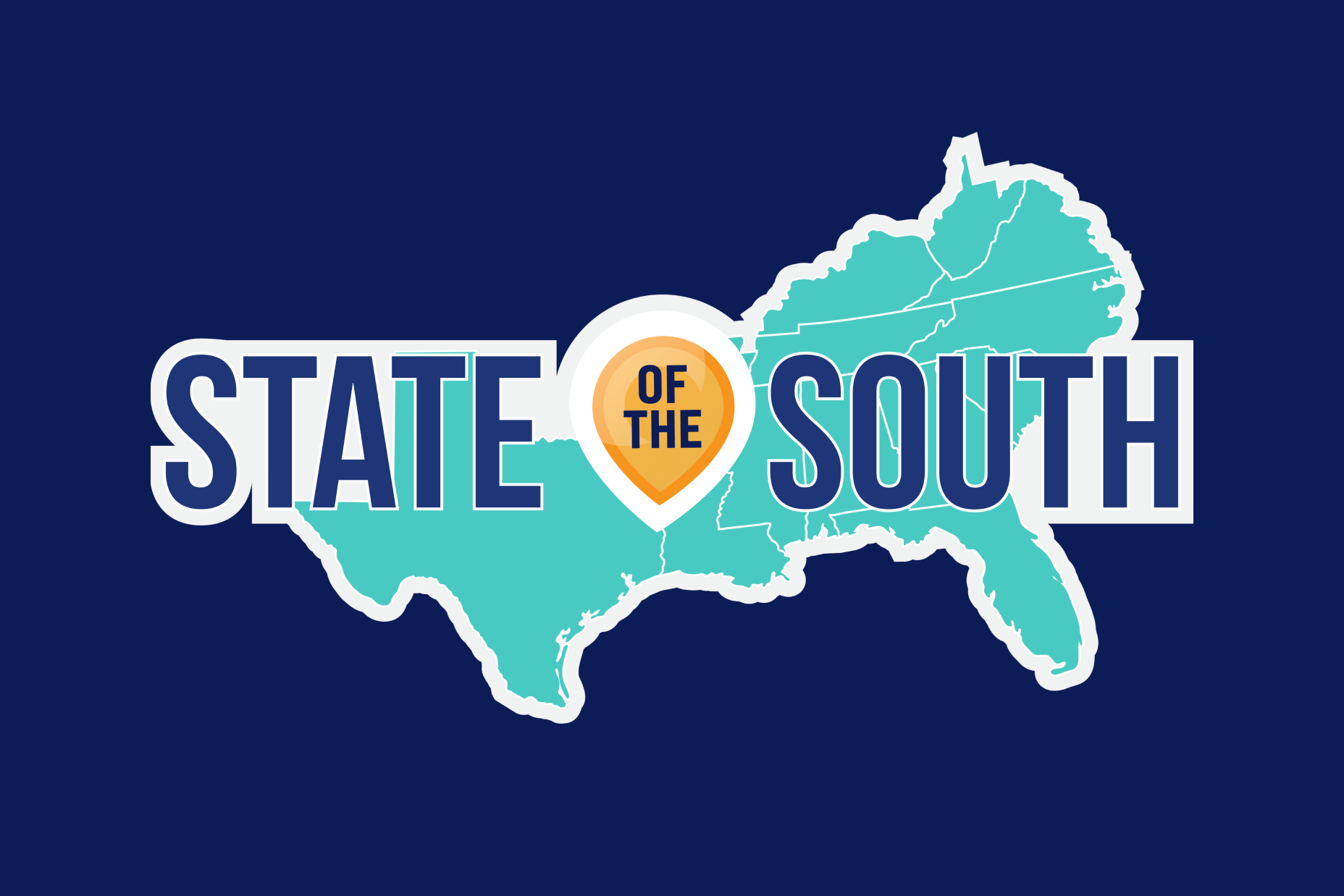MDC to release State of the South 2018 on April 10
Apr 09, 2018
Report calls for Southerners to “recover our courage” and build a South where all people thrive
 To fuel their economies, Southern states now rely heavily on imported talent. In every state in the region, born-out-of-state newcomers exceed born-in-state residents in holding bachelor’s and post-graduate degrees.
To fuel their economies, Southern states now rely heavily on imported talent. In every state in the region, born-out-of-state newcomers exceed born-in-state residents in holding bachelor’s and post-graduate degrees.
In the 2018 State of the South report issued in its 50th anniversary year, MDC points out states’ dependence on imported, well-educated workers over building their own talent-development systems. While in-migrants reflect vitality, especially in metropolitan regions, says the MDC report, the South’s commitment to strengthening public schools, community colleges, and universities has eroded in the aftermath of the Great Recession.
The report, entitled “State of the South: Recovering our Courage,” will be released at a presentation and panel discussion on Tuesday, April 10, at MDC’s headquarters. It found, for example, that in Virginia, with the highest percentage of residents with a B.A. or advanced degree in the region, nearly 50 percent of those are in-migrants compared to less than 25 percent who were born there.
The ratio is a reflection of a region that has fallen back after the removal of numerous barriers to opportunity for African American and low-income residents in the 1960s and ’70s led to improvements in education, income, and health. The result is communities with some of the lowest upward economic mobility rates in the nation because young people are not being adequately prepared for jobs filled by newcomers.
“We have substituted a culture of withdrawal for a culture of investment,” the report says. “Today, we see the resegregation of schools and the persistence of racial disparities in housing and employment, some enabled by state and federal legislation, some perpetuated by structural inequities that laws didn’t remove or relieve. The social and economic consequences of these inequities affect generations of families, particularly communities of
color, and families across the region are less financially secure. The anemic economic recovery from the Great Recession is not conferring benefits to those in middle- and lower-income brackets, leaving low- and middle-income families more vulnerable to rising housing and education costs and increasing uncertainty in everything from retirement benefits to weather patterns.
“Few Southern cities are achieving growth, prosperity, and inclusive economic outcomes that improve conditions across the socioeconomic spectrum; regional growth and prosperity, matched with limited inclusion of historically disadvantaged populations, will likely exacerbate social fissures produced by shifting demographics and increased income inequality,” the report finds, citing data on education, income, employment, demographics, population growth, health, and incarceration, as well as in-migration.
Much of the data is offered with comparisons to the region in the 1960s as MDC marks its 50th anniversary building the workforces of North Carolina and the South. The report looks back at how far the South has come in erasing discriminatory practices, improving its education systems, and raising income levels—and how far it has to go.
The report also looks at the South through three lenses critical to social and economic progress: Belonging (enabling full participation and inclusion in civic and economic institutions by all Southerners); Thriving (creating a more economically dynamic region by removing structural barriers and building support systems that generate wealth and spread its benefits); and Contributing (laying the foundation for current and future wellbeing through deliberate investment and conscious engagement of once-marginalized voices who can define their priorities).
Overall, the report found trends that are lifting the region up, pulling it down, drawing it together, and driving it apart:
- Most Southern states still lag the national average in K-12 achievement.
- Traditional public schools continue to educate eight out of 10 Southern young people, and as states have expanded school choices, a decade of budgetary austerity has left most states with a lower level of public investment in public schools than before the Great Recession.
- From 2011-2016, almost every Southern state reduced fiscal support for higher education.
- While a larger percentage of whites and African Americans now receive postsecondary credentials than 50 years ago, the disparity among whites and African Americans has grown in most Southern states.
- While 77 percent of Southern adults over 75 identify as white, only 46 percent of Southern children under 15 identify similarly, making the South a region that, after struggling to achieve black/white equity, now must expand what it means to be equal and inclusive.
- The South has hubs of excellence and innovation in medicine, health, and science, yet millions of Southerners still lack adequate health insurance; the failure to expand Medicaid in states across the South not only has made it difficult for patients to receive and afford care, but for rural hospitals to keep their doors open.
- The American South has 54 million more residents today than five decades ago and accounted for 49 percent of total U.S. population growth since 1970. States along the Atlantic seaboard, as well as Texas, have grown more robustly than states of the inner-South. Texas, Florida, Georgia, and North Carolina all have more than doubled in size and account for three-fourths of the region’s population growth during this period.
The report challenges Southerners to look back and find the courage to recommit to deliberate action that will engage progress, not backsliding, including:
- Community investment to build an “infrastructure of opportunity”—the policies and systemic practices that create clear and deliberate pathways to connect young people with educational credentials and jobs that pay a family-sustaining wage.
Creating a symbiotic relationship between urban and rural areas that can provide economic opportunity and workforce pathways for both. - Creating a strong, dual-customer talent development system that enables both workers and employers to be competitive in the marketplace.
- Acknowledging and addressing the shifting demographics of increasing racial and ethnic diversity in the region.
To read the report and view supporting data and charts, go to www.stateofthesouth.org.
About MDC
MDC for more than 50 years has brought together foundations, nonprofits, and leaders from government, business and the grassroots to illuminate data that highlight deeply rooted Southern challenges and help them find systemic, community solutions. Our approach uses research, consensus-building, and programs that connect education, employment, and economic security to help communities foster prosperity by creating an “infrastructure of opportunity”—the aligned systems and supports that can boost everyone, particularly those
who’ve been left behind, to higher rungs on the economic ladder. MDC’s landmark State of the South reports since 1996 have shaped the economic agenda of the region, shining a spotlight on historic trends, deep-rooted inequities, and solutions that offer rural and urban communities a path forward. Read our past reports at www.stateofthesouth.org. Learn more about MDC at www.mdcinc.org.





